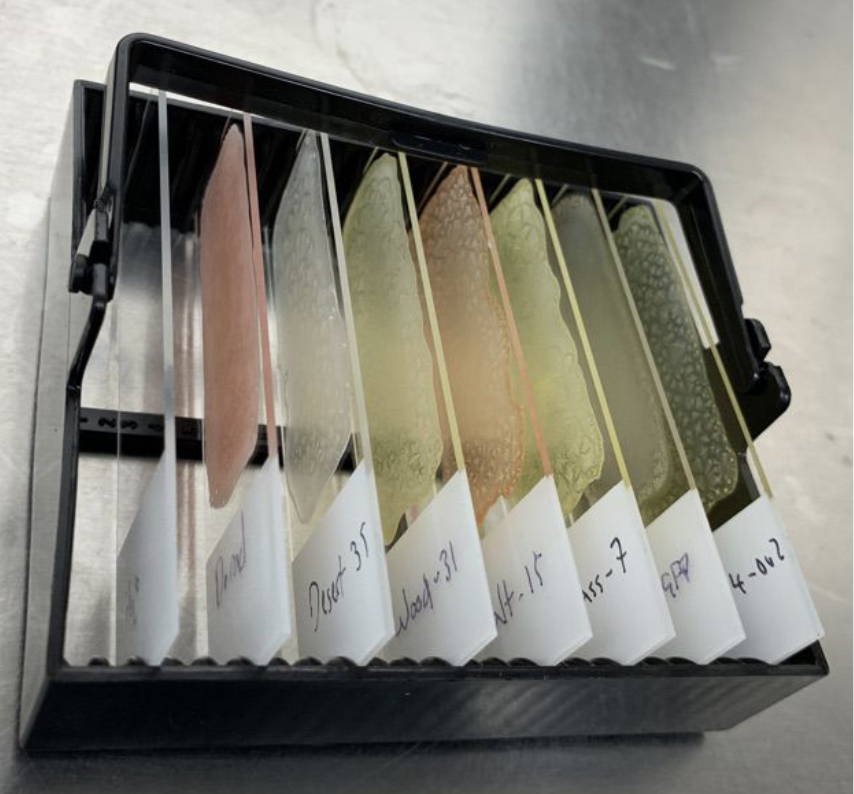Bacterial dispersal and microbiome assembly
Dispersal, the movement of organisms across space, is recognized as an important process
involved in the assembly of microbial communities. Not much is known about the mechanisms
of dispersal or the importance of dispersal for microbial composition and functioning. Previous
work in the lab showed that reducing dispersal altered the abundance, diversity, and composition
of the communities (Albright and Martiny 2018; Albright et al., 2019). Current work expands on
these results by characterizing the rate and composition of dispersal through different routes onto the soil surface (e.g., settling down through air, moving up from soil). We are further exploring
the role of dispersal on community assembly following an environmental disturbance (e.g.,
wildfire).
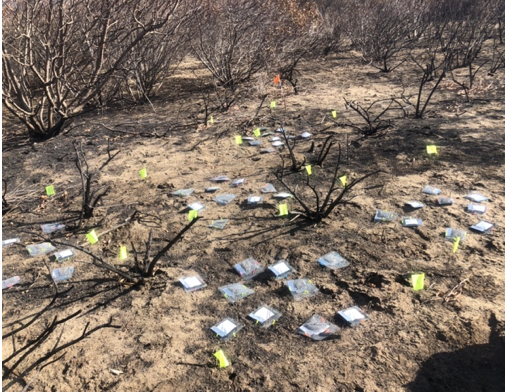
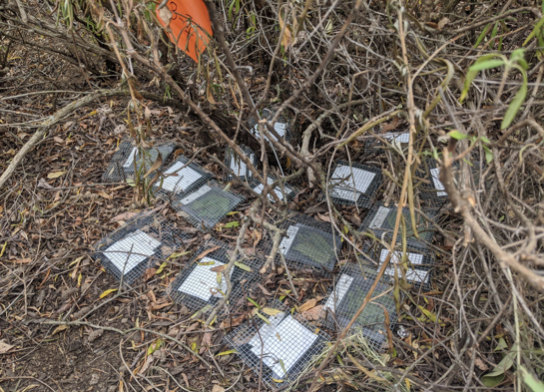
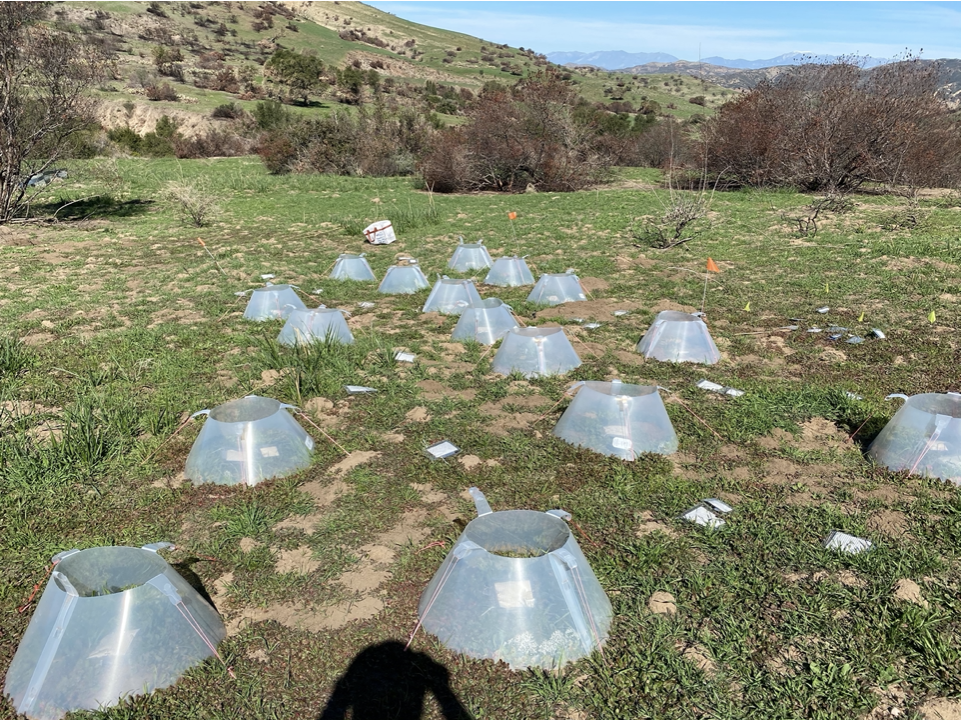
Evolution of a soil bacterium in response to warming
Global climate change is causing increases in temperatures in various habitats. Microbes break down dead plant material in grassland ecosystems, thus regulating the releasing and storing of soil organic carbon. Microbes’ activity can be dramatically changed by the environment over time. Specifically, they have the ability to rapidly evolve and adapt to their environment through mutations. However, it is not clear whether and how microbes adapt to the temperature increases (warming) and how this adaptation affects soil organic carbon. Thus, we constructed small open-top chambers at the Loma Ridge filed site in the Irvine foothills. A model strain of Curtobacterium was sealed in litter bags and exposed to “warming” created by the chambers so that we can study their evolution over time.
Microbial trait diversity on plasmids
Horizontal gene transfer (HGT) or lateral gene transfer, is central to genetic innovation and variation within microbiomes. HGT, the sharing of genetic material between organisms that are not in a parent-offspring relationship, is an underlying mechanism for microbiome adaption to environmental perturbations such as prolonged drought. Much research has focused on bacterial horizontal acquisition of antibiotic resistance genes and associated phenotypes in drug resistant infections. However, HGT extends beyond pathogenic bacteria to microbiomes from distinct environments where their structure and function influences ecosystem processes. What traits and mobile genetic elements are associated in HGT within microbiomes under change? Current work is addressing this question across different environements and within Curtobacterium, an abundant grassland plant-litter decomposer, from sites along a climate gradient.
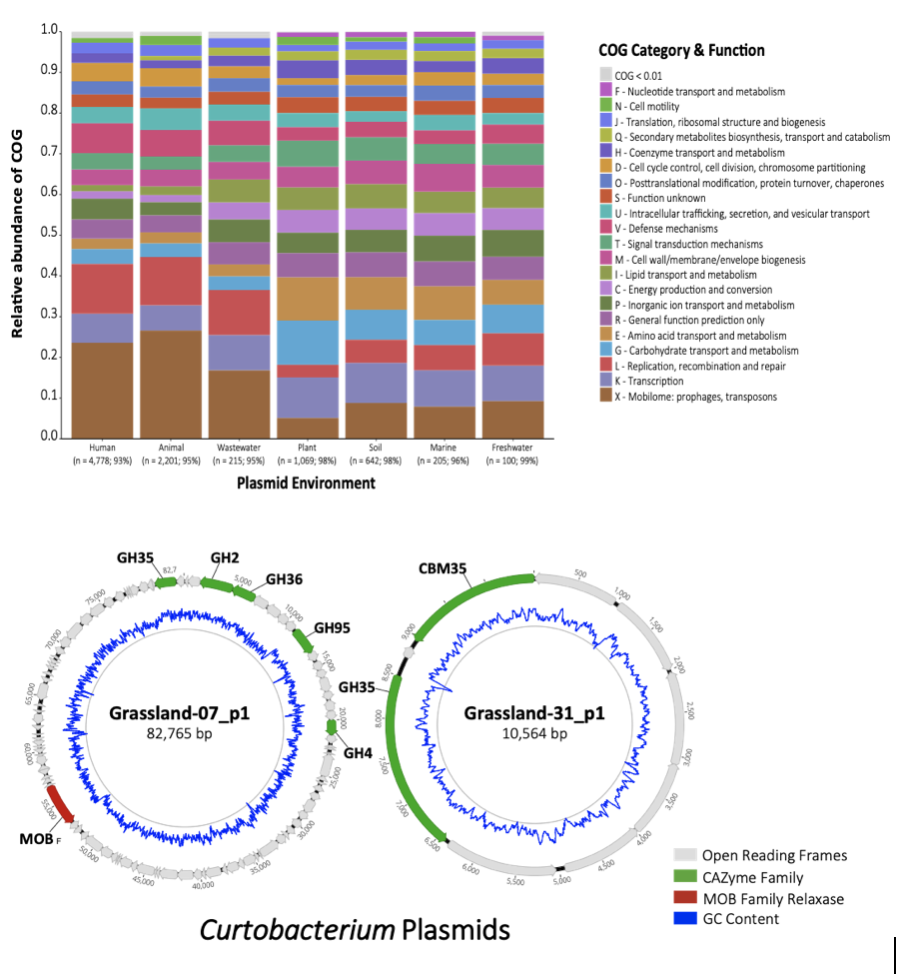
The mechanisms of drought responses in a soil bacterium
